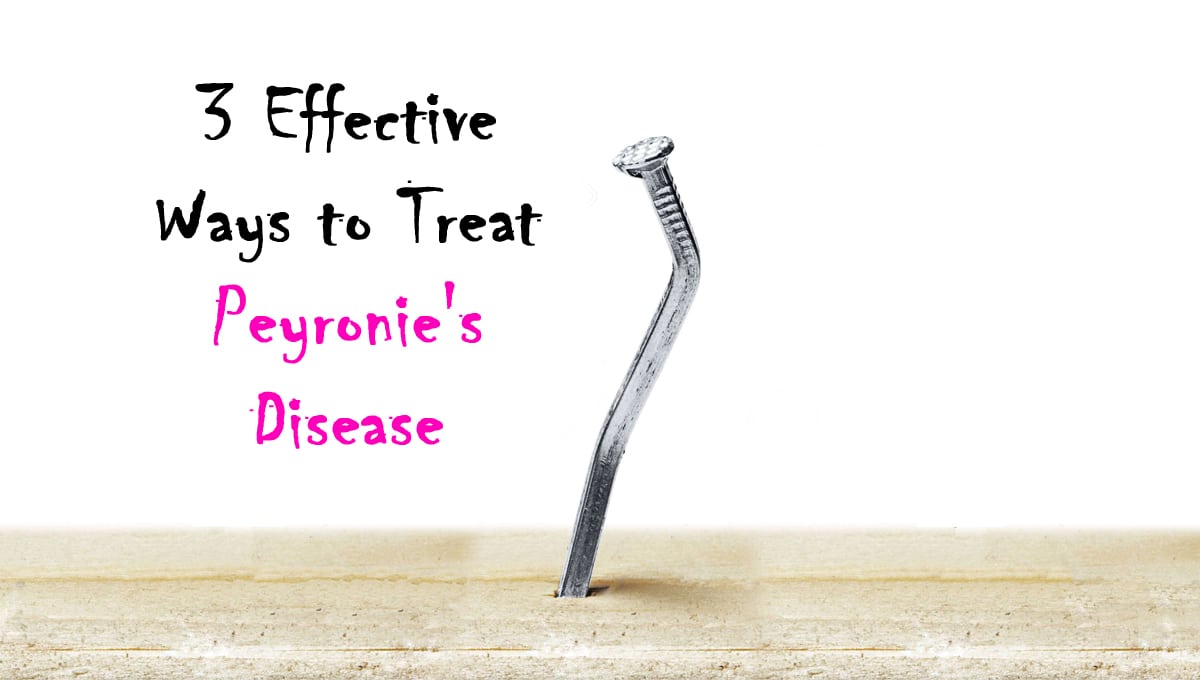Peyronie’s disease is a type of erectile dysfunction that leads to both physical and emotional scarring. It is caused by penile tissue damage resulting in the formation of scar tissue called plaque. Depending on the location and size of the plaque, the penis may bend downward or upward or become indented. The bending may occur suddenly (almost overnight) or happen gradually, beginning with soreness and lumps that develop into a hardened scar. While Peyronie’s disease is most often found in middle-aged men, it can occur at any age.
Here are 3 effective ways to treat Peyronie’s disease:
Medications
Drug therapy is helpful for most men who are affected by Peyronie’s disease, especially during the acute phase. For instance, oral Vitamin E will make the plaques smaller and help to straighten the bent penis. Potassium Amino-Benzoate (Potaba), Tamoxifen, PABA, Colchicine and Carnitine are also effective during the acute phase of the disease. Likewise, during the early stages of the condition, drugs for erectile dysfunction, such as sildenafil (Viagra), tadalafil (Cialis) and vardenafil (Levitra), may be beneficial.
As an alternative to oral medications, injecting certain drugs directly into the plaque can bring relief, particularly for men in the acute phase of the disorder who are not sure whether they want to undergo surgery. For example, verapamil injections disrupt the protein responsible for the formation of lesions in Peyronie’s disease, thus helping to relieve acute symptoms. Interferon injections prevent swelling and control scarring, while collagenase injections break down the plaque and are recommended for treating men with a penis curve of more than 30 degrees. Injection therapy may be administered using a combination of above drugs plus hyaluronidase, betamethasone or prostaglandin E1. Another method of applying these drugs is iontophoresis (electromotive administration/EMDA), where the drug is applied on the penile skin and then pushed through the skin using a low electric current.
Radiation Therapy
During radiation therapy, high-energy rays are targeted at the plaque to relieve the pain. The disadvantage of radiation therapy is that it relieves the pain on the bent penis without having a direct effect on the plaque which causes erectile dysfunction. Instead of radiation therapy, a man may opt for shockwave therapy, a form of mechanical treatment that uses a lithotripter device (such as those used for breaking up kidney stones) to break down calcified plaques or scarring. Other mechanical devices that can be used to treat the disease are low-dose radiotherapy and vacuum-based machines.
Surgery
Surgery for Peyronie’s disease is reserved for men suffering from severe, disabling penile disorder that makes it difficult to have sex. Before the surgery, the urologist will check the blood flow in the penis by injecting a drug to make it stiff and also examining the penis using ultrasound. The tests are used to assess the penis before deciding the type of surgery that is ideal. There are three basic ways through which the urologist will fix the disorder surgically. First, the urologist can remove the plaque and replace it with a tissue patch, helping to stretch the penis and restore its original length. Secondly, the surgeon may change or remove part of the tunica albuginea from the penis area opposite the plaque, an operation known as the Nesbit procedure. Lastly, the urologist may perform penile prosthesis implantation, a procedure recommended for men having both Peyronie’s disease and erectile dysfunction.
Conclusion
Since Peyronie’s disease varies extensively in how it affects patients, the treatment chosen should be carefully selected according to an individual’s condition. Most importantly, treatment should aim to preserve sexual function. If you are suffering from the disease, it is important to work closely with a urologist in order to get the right resources, prompt diagnosis and correct treatment, and to prevent the disease from turning into a crisis. For more information on dealing with Peyronie’s disease and erectile dysfunction, visit Advanced Urology Institute.
 My name is Rishi Modh, I am a board-certified urologist with Advanced Urology Institute.
My name is Rishi Modh, I am a board-certified urologist with Advanced Urology Institute.


